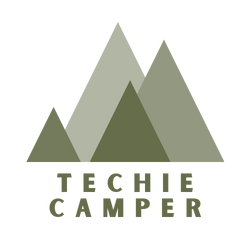If you were given the opportunity to go out for a camping adventure, wouldn’t you? The outdoors offers an escape from the fast paced urban life that constantly envelops us, and a lot of us are long overdue for a nature getaway. If you’re new to the camping scene and aren’t sure how to start, we’re here to help.
So, what is tent camping? It’s what many of us picture when we think about the classic camping scene, which involves pitching a tent and sleeping in it. Tents can be set up in numerous environments and can bring you oh so close to nature.
Traditional camping, while classic and fun, isn’t the only type of camping. Nowadays, people can camp in their cars, RVs, kayaks, hammocks, and even with an eye on luxury while “glamping.”
With so many choices to be had, there are certain things to consider before making a choice. For example, cars and RVs can only go so far. So if you’re looking for something remote, hiking and setting up a tent is a better choice. Not to mention, you get a better sense of being out in the open.
Some people have a lot of experience and can handle extreme camping, which involves finding things in the wilderness to survive with. However, this is only for a select few. Camping with a hammock is nice, but this can take a turn depending on the weather and can be dangerous if there’s animal intruders or worse lurking about.
This isn’t to discourage you. Yet if you’re a beginner and want a safe camping option that’s also closer to roughing it, then tent camping is your best choice.
If you’re excited about the prospect of spending time outdoors but don’t know where to begin, this article is here to help. We will go over things including what to bring on a camping trip, how to set up a campsite, how to make tent camping more comfortable, camping safety, and discuss common beginner mistakes (that way you can avoid them and have a better time!)
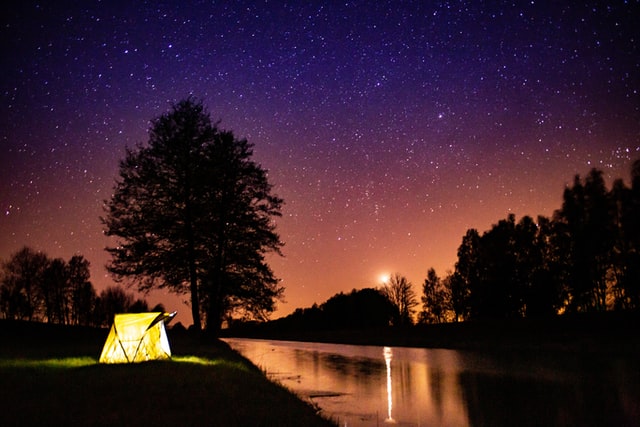
Planning Your Tent Camping Trip
What To Bring When Tent Camping
Everyone has a different idea of how much they want to bring along on their camping trips. While some like to pack lightly and only take the absolute essentials, others like to make their tents as comfy as possible. After all, it’s better to be safe than sorry! No matter what your camping style is, we have created a list of items that are smart to bring along on any camping trip.
Since the most crucial item for tent camping is a tent, let’s start the list by going over some things to consider when purchasing a tent.
How to Choose a Tent
Size of Your Tent
It is important to consider the number of people who will be in the tent, because you don’t want things to get cramped or crowded. Be mindful of belongings or any pets you might bring along. Sometimes it’s best to get a 4-person tent even if it’s just two of you and a dog.
If you’re looking to get a tent for the entire family, it’s also important to consider the amount of doors you may need so that no one feels too cramped. In addition, you won’t wake each other stepping over each other in the middle of the night to use the restroom.
Height of your Tent
Some tents give you enough room to stand comfortably, while others make it trickier. Be sure to pay attention to the height measurements when purchasing your tent.
There are two styles of tents to consider. The first is a Cabin-style tent which features near-vertical walls to maximize its peak height and allows more space.
The second is a dome-style tent which stands tall in the center and has sloped walls, slightly reducing the space inside. However, it is very durable especially in windy conditions.
Tent That Can Stand Up to the Elements
There are three tent seasonality designations which each have strengths and weaknesses in different weather. Be sure to find the right tent for camping in the rain.
A 3-Season Tent keeps you dry during rain or light snow, usually has mesh nets to ward off bugs and provides fantastic privacy. This is the most lightweight of tent shelters. It’s also the most popular of three types because they’re usually cheaper and because most campers go out during relatively temperate conditions in the spring, summer and fall seasons.
A 3-4 Season Tent is designed sturdier to handle conditions in the late fall (which might involve light snow) and early spring. Their goal is to offer a balance of ventilation, strength and warmth retention.
Finally, a 4 Season Tent is built to handle strong winds, heavy snow, and is perfect for any season. This tent is usually for expert campers who are prepared to face the elements.
Now that we’ve gone over some things to consider when buying your tent, here is a list of other essential items for your to bring along as well:
What To Bring When Tent Camping
- Tent
- Floor tarp
- Sleeping bag
- Air mattress
- Camping pillow
- Headlamps or flashlights (with extra batteries)
- Camp chairs
- Camp table (if there is no picnic table)
- Lantern
- Swiss army knife or multi tool
Health & Hygiene
- Toilet paper
- Hand sanitizer
- Toothbrush and toothpaste
- Toiletry kit
- Quick-dry towel
- Menstrual products
- Prescription medications
- First-aid kit or first-aid supplies
- Insect repellent
- Sunscreen
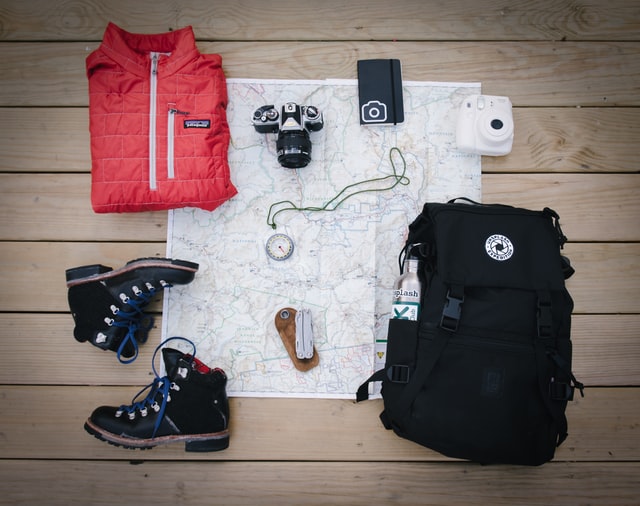
Cooking and Eating Essentials
- Stove and fuel
- Matches/light/fire starter
- Cook pots (and pot holder)
- Frying pan
- Eating utensils
- Cooking utensils
- Bottle opener, can opener, corkscrew
- Sharp knife
- Plates/bowls
- Mugs/cups
- Cutting board
- Water bottles
- Camp sink or wash bins
- Biodegradable soap
- Pot scrubber/sponge(s)
- Trash/recycling bags
- Dish towel
Things You’ll Most Likely Need But Optional
- Cooler
- Ice or ice substitutes
- Camp grill and fuel
- Grill rack
- Griddle
- Dutch oven
- Charcoal
- Portable coffee/tea maker
- Marshmallow/hot dog roasting forks
- Small food-storage containers/bags/foil
- Large water jugs
Tools & Repair Items
- Multi-tool
- Duct tape
- Extra cord
- Tent-pole repair sleeve
- Pad/Mattress repair kit
- Mallet or hammer (for hammering tent stakes)
- Saw or axe (for cutting firewood)
- Small broom and dustpan
Clothing & Footwear
- Moisture-wicking underwear
- Moisture-wicking T-shirts
- Quick-drying pants/shorts
- Long-sleeve shirts (for sun and bugs)
- Lightweight fleece or jacket
- Boots or shoes suited to terrain
- Socks (synthetic or wool)
- Sleepwear
Additional items
- Rainwear (jacket and pants)
- Long underwear
- Warm insulated jacket or vest
- Fleece pants
- Gloves or mittens
- Warm hat
Campsite Extras
- Solar and portable power
- Binoculars
- Navigation tools
- Field guides (flowers, insects)
- Star chart/night-sky identifier
- Book/reading material
- Notebook and pen/pencil
- Music player with headphones
- Games and toys
- Dog gear
- Dry bags, stuff sacks or clear plastic bins to store items
Setting Up a Campsite
There are many different steps for setting up a campsite, and we’re here to break things down and explain everything in order to make this process easier and safer for you.
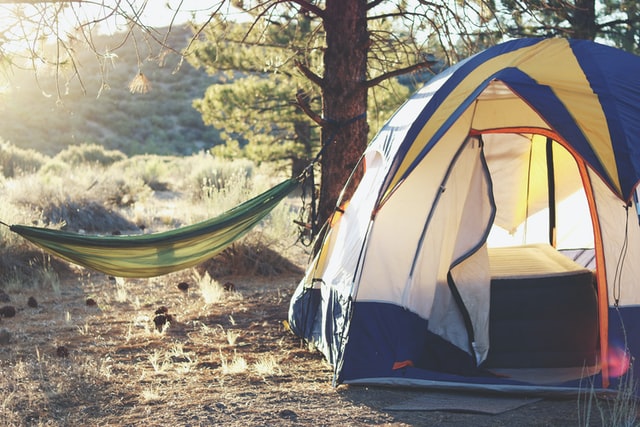
Select Your Site
The best kind of land to look for when setting up camp should look as flat as possible. This will make cooking a lot easier and can provide comfort when laying down to sleep. It is best to stay clear of any roots or vegetation. In fact, try to set up near trees which will provide you both shade and protection from the wind. Just make sure to keep a safe distance from any dead or falling branches.
It is recommended to set up your tent after finding a good piece of flat land. This way you can start setting things up inside and it will give you an idea of where the other areas should be designated.
Set Up Your Food Area
Outdoor cooking is a wonderful part of the camping experience, and there are some things to keep in mind in order to do it safely.
For starters, you should always cook downwind. Secondly, since it is best to keep food stored and locked away to protect it from animal intruders.
In the daytime, it is recommended to keep food stored in a cooler or car, especially if you’re going hiking or engaging in other activities.
At nighttime, it is important to take extra precautions while you sleep. Try to keep food stored in a cooler inside your vehicle, or in a metal box hung 10 to 12 feet up in a tree.
Set Up Your Bathroom Site
This applies if you are camping in an area without any bathrooms nearby. For safety and hygiene, it is recommended to set up this designated area 200 feet away from your main campsite. For added comfort it is recommended to set up a tarp as a curtain to create some privacy.
It is also recommended to designate places for trash in order to make the cleanup process easier when it’s time to pack up and go home.
Campfire Setup
Who can possibly go camping without starting a campfire? It is an essential part of the experience, so here’s a few safety tips for you to consider before starting one:
- Before you start building your campfire, it is extremely important to clear a 15-foot radius around it. It should be clear of any foliage or any extra wood.
- Pay attention to the wind pattern since a strong gust could send embers shooting into the woods.
- It is smart /9and potentially life saving) to keep materials around that can extinguish a fire such as; a bucket of water or sand, a shovel, or a fire blanket. It is always best to take precautions for both ourselves and the environment!
Now that you have the information on safety precautions and things to be aware of, you are ready to set up camp!
How To Choose a Tent
When choosing where to settle down, it is important to consider your needs along with the needs of those in your group. Some things to consider are; age, physical limitations, and medical needs.
It is best to review the amenities available at your campground of choice to ensure that campers with special considerations are comfortable and safe.
How to Make Tent Camping More Comfortable
Going camping can be a lot of fun, but many of us want to do so without having to jeopardize our creature comforts. Perhaps that’s what keeps some people from trying to camp.
Camping has a reputation for some as it is dirty and uncomfortable. In fact, this doesn’t have to be the case at all! Let’s take a look at a number of things you can bring along in order to make the experience that much more comfortable and satisfying:
Sleeping Pad
Apart from choosing flat ground to set up camp, a sleeping pad or padded ground cover can make all the difference. You can use a mattress topper, an inflatable mattress or anything padded that you can repurpose.
For those not used to sleeping on hard ground, this will definitely make sleeping a lot easier.
Blankets and Pillows
Who doesn’t enjoy feeling cozy wrapped in their blankets? Some warm blankets from home and quality pillows can mean the difference between a restful camping trip and a struggle. Plus, their familiar scent can keep you from feeling homesick.
Snacks
Bringing along your favorite snacks can definitely make camping a more enjoyable experience. Whether it’s enjoying a bag of chips while watching the sunset, some chocolates while lounging in the tent, or even making s’mores with the family! It’s safe to say a snack will always be happily enjoyed.
Eye Mask and Ear Plugs
The sounds of nature are beautiful and peaceful during the day, but they can end up being disruptive when you’re trying to sleep. If you’re not used to hearing a lot of random noise at night, ear plugs can be a great help.
Additionally, an eye mask can help in the morning when the sun is shining brightly. This way you can catch more hours of sleep and feel better rested.
Is camping in a tent safe?
Camping has its inherent dangers, but there is a plenty you can do to maximize alertness and reduce risk. It is always smart to be prepared and bring along items that can help in case of an emergency. This includes a first aid kit, insect repellent, allergy medicine, and any medications or inhalers your family members might need.
In addition, if you’re bringing along your furry friend, make sure they are up to date on all their rabies shots.
Let’s go over various safety procedures for different aspects of your camping trip to ensure you’re both knowledgeable and ready for any situation which might occur:
Water safety
It is important to bring plenty of water when camping. Hiking, swimming, and playing with our family is a lot of fun, but it is good to remember to stay hydrated. Clean water might not be available on all campsites, so be sure to pack plenty.
If you absolutely have to use water from a lake or any other natural source, make sure you purify it. In order to do this, you’ll need to boil it thoroughly or use water purification tablets that contain iodine, halazone or chlorine. These tablets will kill most bacteria, viruses and parasites on contact.
Food safety
Keep food off any picnic tables after eating and keep it concealed in coolers and/or cars. If you don’t, there’s a good chance you have some curious wildlife roaming into your campsite in search of a cheap meal.
It’s also important to remember to bring food that isn’t easily perishable and instead opt for things that don’t need refrigeration like dried fruits, rice, and peanut butter.
Wash your hands thoroughly before any meal prep or eating, and also thoroughly wash any surface that will come in contact with your food.
Sun safety
Sunscreen saves skin and saves lives. Especially in the summer, you’ll be in constant contact with the sun and need adequate protection.
Be sure to apply sunscreen throughout the day and wear hats and sunglasses when it sun it as its highest and most potent. A nasty sunburn will take the fun out of an otherwise exciting trip and could lead to serious health issues down the road.
Outdoor and wildlife safety
If you’re out on a hike and see a sign that cautions not to cross, it is in everyone’s best interest not to cross it. Paying attention to any signs and obeying them is a very important part of keeping you and your loved ones safe and sound.
Also, it is always best to stay on the trail and not go over any barricades or around any fences. You may wander onto private property and end up answering for trespassing.
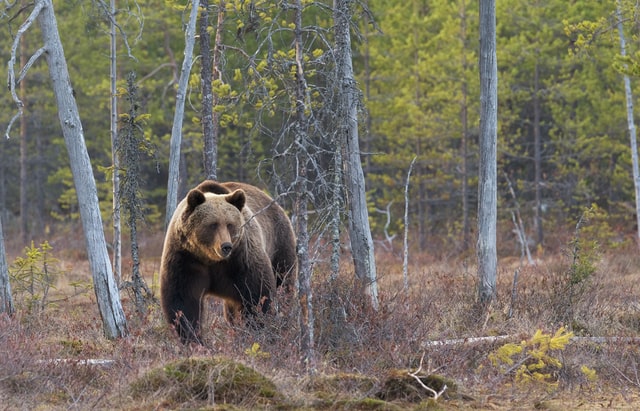
View all wild animals at a safe distance. In the end, we are in their territory and need to respect their space. Do not try to touch them or approach them (even if they don’t look predatory). Don’t feed them human food since this can harm them. And don’t get in between a mother and her young. This could lead to a confrontation which will be potentially harmful for animals and humans alike.
In the end, it is a privilege to see wildlife in their natural habitats and it’s imperative to treat them with respect and precaution.
Insect safety
Bugs can be fun to spot and even photograph, but some can be rather pesky and potentially dangerous.
It’s important to use insect repellent containing DEET to keep away mosquitos, ticks and other creepers. Even with this repellent, it is crucial to check for ticks at least once a day in order to lower risk for contracting Lyme disease.
Also, wear light color clothing to spot a mosquito on you before it’s too late.
Most tents are built to keep bugs away, but we do recommend mosquito screens if you want additional protection in both your tent and patio areas.
Campfire safety
Campfires are a beloved part of the camping experience. Just know it is crucial to follow every rule in the book when lighting a fire.
Before starting your fire, check with park rangers or the park service to see if they’re allowed under the current weather and fire warning conditions.
If you do have a fire going, please remember to keep water and/or sand around to extinguish it. Never leave kids or pets unattended around a live flame, and always make sure you extinguish the fire entirely once you are done.
Improperly extinguished campfires are the leading cause of wildfires in the US, causing huge devastation to people, property and the environment itself. So it bears repeating, make sure to extinguish all flames properly before leaving the site unattended.
Common Beginner Mistakes For Tent Camping
Rather than leaving it to trial and error, we’ve compiled a list of the common missteps made by most novice campers and how to avoid them:
Buying the wrong tent
Is your tent only for you and your significant other? How much space do you both prefer? Is it for your whole family?
Be honest about your comfort level and the comfort level of others when it comes to having space. When you can, always opt for a more spacious tent for the sake of comfort.
For maximum comfort, add two more campers to your capacity when buying a tent. A 2-person tent is adequate for two people, but a four-person tent is much better from those looking to relax and unwind.
Not bringing enough water
It is very important to stay hydrated while camping. Many people underestimate the water they’ll need and that’s dangerous in camping areas where there’s not a reliable water supply.
You’ll need water for cooking, washing and rinsing dishes, and personal hygiene as well. Overestimate your water supply as much as you can to be safe, not sorry.
Poor food preparation
While bringing raw meat in coolers is fine, it is best to bring a small quantity so it is consumed the first day or two.
It is also a best practice to bring a lot of nonperishable foods like trail mix, peanut butter, crackers, and bread. Bringing foods which can spoil easily could both make campers sick and contaminate the rest of your food supply.
Arriving too late
If you’re starting your drive out to the campsite at 6pm, you will most likely have to unpack and set up your campsite in the dark. That’s not a pleasant experience, especially for a beginner.
Make sure you arrive at your campsite as early as you can. Natural sunlight is your best friend when it comes to finding the right campsite and setting up camp.
This will also give you ample time to cook your first meal and not feel rushed.
Bringing too much or too little
Some beginners tend to make this classic mistake and end up feeling crowded and cramped when bringing too much. Conversely, some mess things up for themselves by bringing too little.
It is important to plan ahead of time to avoid this mistake. Keep in mind the amount of days you’ll be going away for. Bring exact ratios based on that time frame to balance comfort, space and necessity.
Not planning adequately
Simply put, planning adequately eliminates most problems. Ask yourself the right questions so you have the right solutions before a problem even arises.
How many people are going camping with you? How many days will you be camping? Where will you be camping? What’s the weather supposed to be like? Does your site allow campfires? Does the site have drinkable water and bathrooms nearby?
Also, make a list of supplies similar to the one earlier in the article. When packing, check off that list one by one before heading out.
Final Thoughts
Tent camping can be such a fun and enriching experience, even more so when you have the knowledge about exactly what it entails.
We really hope you enjoyed this article and learned more about the different aspects of tent camping. Knowledge is power and can make a new experience like camping less daunting and more fun. When the time comes, use this article to stay safe and ensure you enjoy every bit of your first camping experience!
